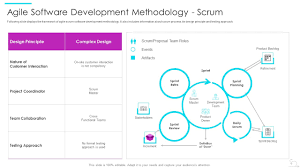Exploring the Role of an Uber Software Engineer in Driving Innovation
The Role of a Software Engineer at Uber
Uber, the global transportation technology company, relies heavily on the expertise of software engineers to develop and maintain its innovative platform. A software engineer at Uber plays a crucial role in designing, implementing, and testing software solutions that power the company’s operations.
Responsibilities of a Software Engineer at Uber
Software engineers at Uber are responsible for:
- Designing and developing scalable software systems to support Uber’s services.
- Collaborating with cross-functional teams to ensure seamless integration of new features and technologies.
- Writing clean, efficient, and maintainable code that meets industry standards.
- Participating in code reviews and providing constructive feedback to peers.
- Identifying and resolving technical issues to improve system performance and reliability.
Skills Required
To excel as a software engineer at Uber, individuals need to possess a diverse set of skills, including:
- Proficiency in programming languages such as Java, Python, or Go.
- Experience with distributed systems and cloud computing technologies.
- Strong problem-solving abilities and analytical thinking.
- Excellent communication skills for effective collaboration with team members.
- An innovative mindset to drive continuous improvement in software development processes.
Career Growth Opportunities
Uber provides software engineers with ample opportunities for career growth and professional development. Engineers have the chance to work on cutting-edge projects, contribute to open-source initiatives, and participate in hackathons that foster creativity and innovation within the organization.
In Conclusion
Becoming a software engineer at Uber offers an exciting opportunity to work on groundbreaking technologies that impact millions of users worldwide. The role not only challenges individuals to push their technical skills but also encourages collaboration and creativity in solving complex problems within a dynamic environment.
6 Essential Tips for Excelling as an Uber Software Engineer
- Stay updated on the latest technologies and programming languages.
- Practice coding regularly to improve your skills and problem-solving abilities.
- Collaborate with team members effectively to deliver high-quality software products.
- Attend tech conferences and workshops to network with industry professionals and learn new trends.
- Be adaptable and open to learning new tools and methodologies in software development.
- Prioritize communication skills to effectively convey ideas and collaborate with stakeholders.
Stay updated on the latest technologies and programming languages.
To excel as an Uber software engineer, it is crucial to stay updated on the latest technologies and programming languages. The tech industry is constantly evolving, and keeping abreast of new developments ensures that engineers can leverage cutting-edge tools and techniques to enhance their work at Uber. By staying current with emerging trends, software engineers can remain competitive, adaptable, and equipped to tackle the ever-changing challenges of developing innovative solutions for Uber’s platform.
Practice coding regularly to improve your skills and problem-solving abilities.
To excel as a software engineer at Uber, it is essential to practice coding regularly to enhance your skills and problem-solving abilities. Consistent practice not only helps you become more proficient in programming languages but also sharpens your analytical thinking and creativity when tackling complex technical challenges. By dedicating time to coding practice, you can stay ahead of industry trends, improve your efficiency in developing software solutions, and ultimately contribute effectively to the innovative work environment at Uber.
Collaborate with team members effectively to deliver high-quality software products.
Collaborating effectively with team members is essential for Uber software engineers to deliver high-quality software products. By fostering open communication, sharing ideas, and leveraging each team member’s strengths, engineers can work together cohesively towards a common goal. This collaborative approach not only enhances the efficiency of the development process but also ensures that the final product meets the highest standards of quality and innovation.
Attend tech conferences and workshops to network with industry professionals and learn new trends.
Attending tech conferences and workshops is a valuable tip for Uber software engineers. By participating in such events, engineers have the opportunity to network with industry professionals, exchange ideas, and stay updated on the latest trends and technologies. Building connections with like-minded individuals can lead to new collaborations, mentorship opportunities, and a deeper understanding of the ever-evolving tech landscape. Additionally, these gatherings provide a platform for sharing knowledge, gaining insights from experts, and honing skills that are essential for success in the fast-paced world of software engineering at Uber.
Be adaptable and open to learning new tools and methodologies in software development.
To succeed as an Uber software engineer, it is essential to remain adaptable and embrace a continuous learning mindset when it comes to new tools and methodologies in software development. By staying open to adopting innovative technologies and approaches, software engineers at Uber can enhance their skill set, stay ahead of industry trends, and contribute effectively to the company’s mission of providing cutting-edge solutions for transportation technology.
Prioritize communication skills to effectively convey ideas and collaborate with stakeholders.
Effective communication skills are essential for Uber software engineers to convey their ideas clearly and collaborate efficiently with stakeholders. By prioritizing communication, engineers can ensure that project requirements are well-understood, feedback is effectively exchanged, and solutions are implemented smoothly. Strong communication skills enable software engineers to work seamlessly with cross-functional teams, address challenges proactively, and build strong relationships with stakeholders, ultimately leading to successful project outcomes at Uber.




